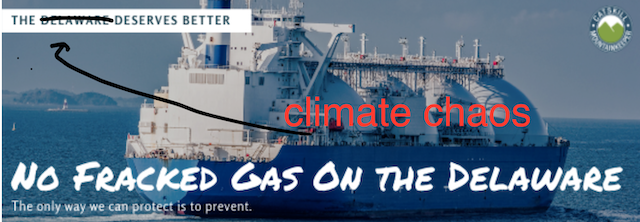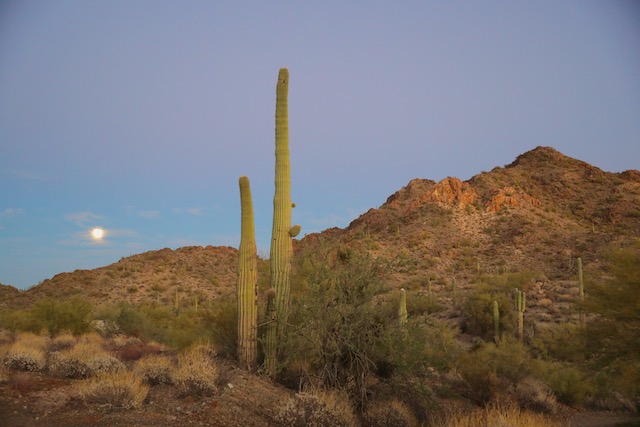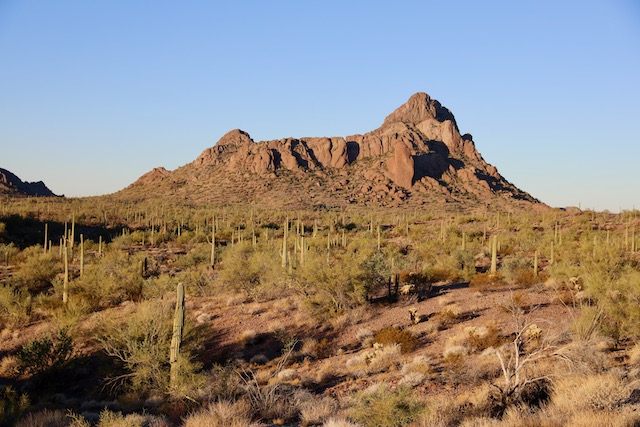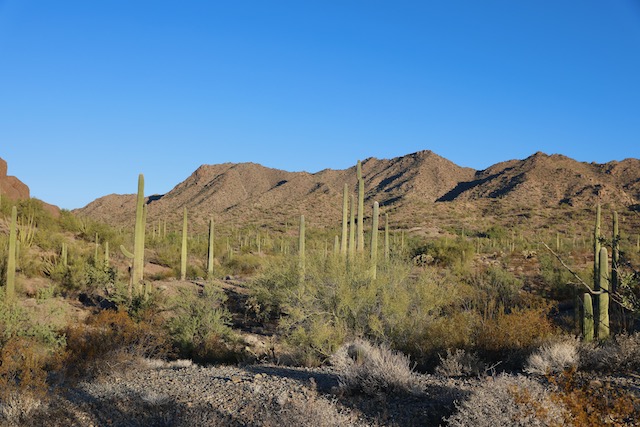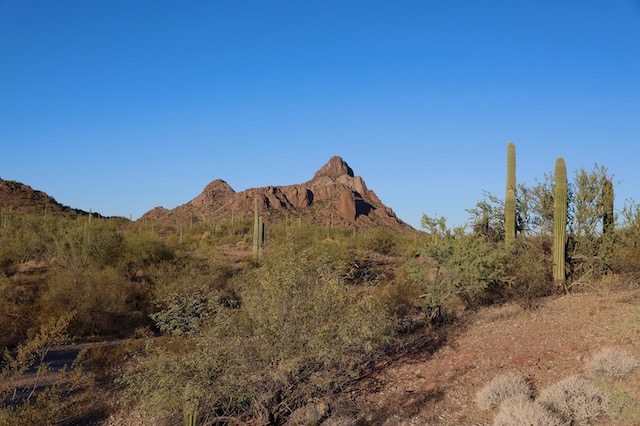Delaware River LNG Plant Would Make a Mockery Of NY Gov. Cuomo And NJ Gov. Murphy’s Climate Commitments
Greenhouse Gas Emissions From Fracked LNG Scheme Ignore Climate Emergency
Would Wipe Out Benefits Of Billions of Dollars In Renewable Energy Investments
The first task is to put the economy at the service of peoples. Human beings and nature must not be at the service of money. Let us say NO to an economy of exclusion and inequality, where money rules, rather than service. That economy kills. That economy excludes. That economy destroys Mother Earth.
The economy should not be a mechanism for accumulating goods, but rather the proper administration of our common home. ~~~ Pope Francis
A coalition of environmental groups from the four States that comprise the Delaware River Basin (NY, NJ, PA, DE) today begin a week long targeted coordinated campaign to pressure their State Governor’s to oppose a proposed Liquified Natural Gas (LNG) plant on the Delaware River.
The campaign is in advance of the Delaware River Basin Commission (DRBC) public meeting on December 9, 2020, where the agenda for the meeting vaguely alludes to possible “action” on the LNG scheme (see item #6 on the DRBC agenda).
That bureaucratic ambiguity is in keeping with a pattern of obfuscation and misleading claims on this project, by DRBC and the NJ DEP, (remarkably, the Murphy DEP already quietly issued various permit approvals) see:
- Murphy DEP LNG Permit Approval & Suspension Exposes A Rigged And Corrupt DEP Permit System
- Did Senate President Sweeney and/or NJ Gov. Murphy Pressure Regulators To Keep Delaware LNG Export Terminal Under The Radar?
The environmental groups have far more resources than I, so I’ll just provide some background and make a few political and policy points that their public action alerts have either ignored or not adequately focused on.
1. We are in a climate emergency and have just a decade to phase out fossil fuels to avoid catastrophe
The climate emergency demands a moratorium on new fossil infrastructure and a rapid phase out of existing fossil fuels. (See: IPCC Report on Global Warming of 1.5 degrees C)
It is literally insane to be building more fossil infrastructure and increasing fossil fuel production.
2. Approval of this LNG fossil fueled scheme would make a mockery of State climate and energy plans
The Governors of NY (Cuomo) and NJ (Murphy) have made climate and renewable energy a major policy focus. The both have signed so called “nationally leading” climate and energy legislation, made regulatory commitments, killed proposed fossil infrastructure projects, and enacted Energy Master Plans that call for transition to 100% renewable energy and billions of dollars of public investment in renewables.
The LNG fracked fossil fuel scheme not only directly contradicts those policies and commitments, it would wipe out any greenhouse gas emission reductions that could result from billions of dollars of public investments in renewable energy.
3. The NJ DEP and the DRBC reviews are fatally flawed because they completely failed to consider greenhouse gas emissions, climate impacts, or energy policy
As we’ve written, DEP permit regulations ignore climate change, see:
The DRBC regulations and review procedures are similarly flawed.
How can regulatory agencies, tasked to serve the public interest, review and approve fossil infrastructure without even considering climate science and energy policy during a climate emergency?
4. Why are some NJ “environmental” groups undermining this targeted campaign and providing green cover for DRBC?
I just learned that NJ League of Conservation Voters, NJ Audubon, and NJ Conservation Foundation (they are pathetic cheerleaders, along with their $100 million Wm. Penn Foundation created faux grassroots fundraising focused front group The Coalition for the Delaware Watershed) are doing a public event with the DRBC.
Of course, these corporate foundation funded groups are not part of the coalition targeting the Governors and DRBC to fight the LNG scheme.
Instead, these groups are diverting the public from the climate emergency and DRBC role in the LNG scheme, thereby providing green cover for the DRBC via a “meet the DRBC” event, just 6 days after the December 9 meeting:
The Delaware River provides drinking water to more than 13 million people and supports an outdoor recreation industry of over 20 million dollars each year. It’s managed and protected by the Delaware River Basin Commission (DRBC), the only agency of its kind in the U.S. The DRBC holds official public meetings but rarely gets the opportunity to less formally interact with the public.
That’s why I hope you make time to join us for our virtual meeting on Tuesday, December 15 with Delaware River Basin Commission deputy executive director, Kristen Bowman-Kavanagh. This is a rare opportunity to engage directly with the Commission about its priorities, the establishment of its new Advisory Committee on Climate Committee, and the environmental issues that you care about most.
This is not the first time these groups have done very, very similar diversion and political cover schemes.
It’s happened far too many times to be coincidental.
Shame on these corrupt self serving bastards. (my guess is that this event was created and funded by Wm Penn)
